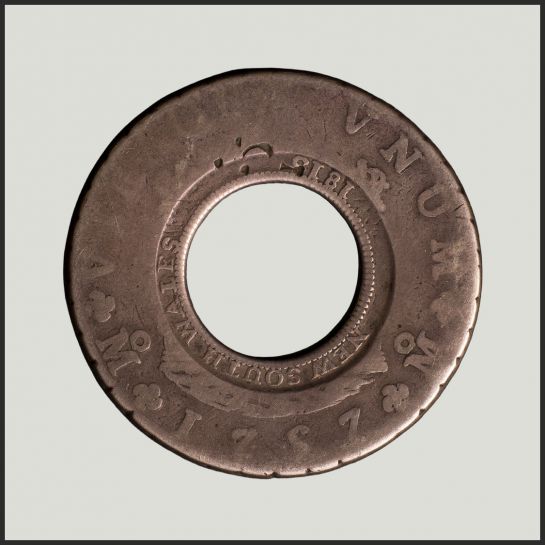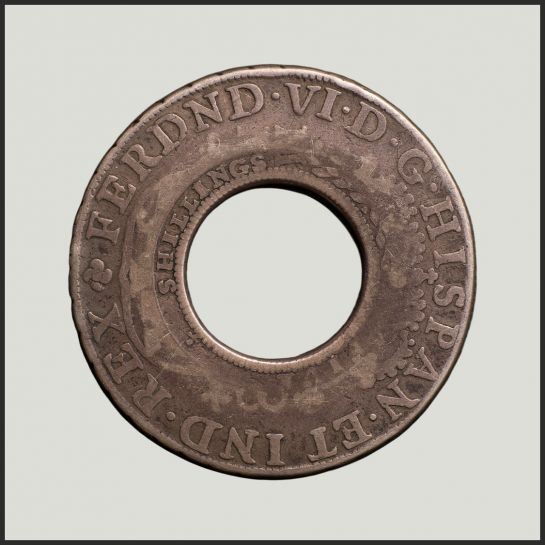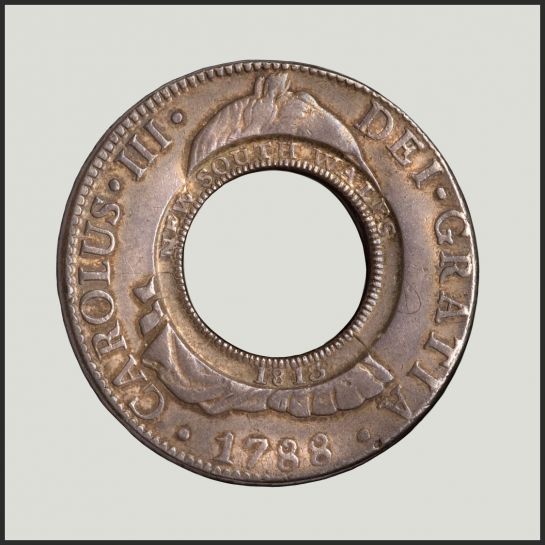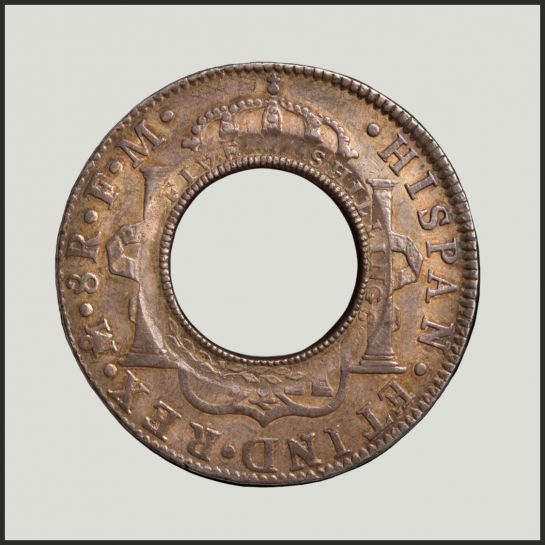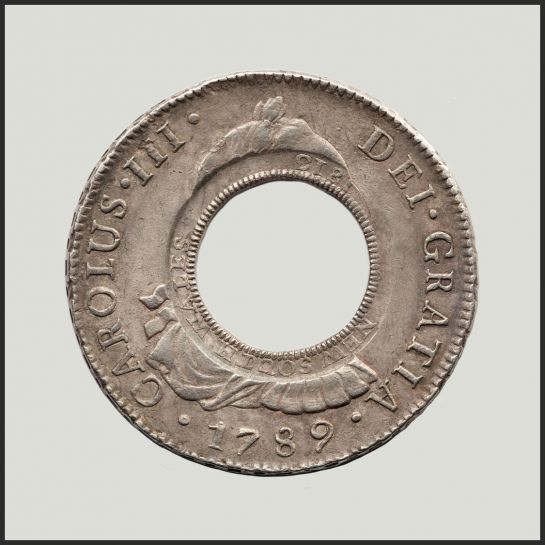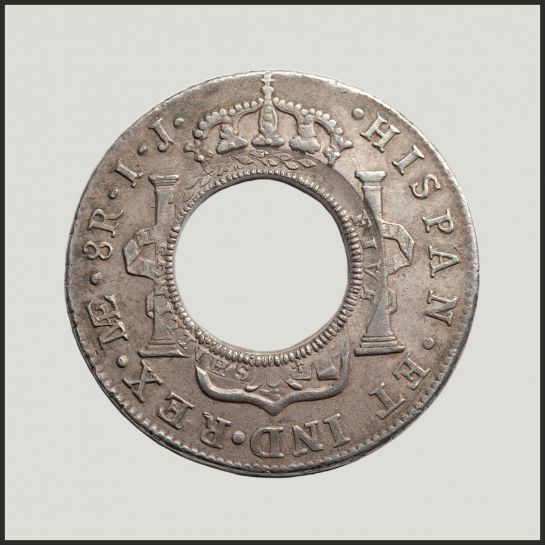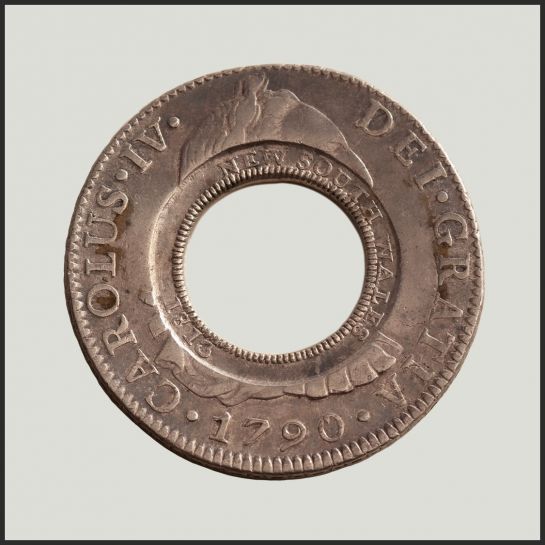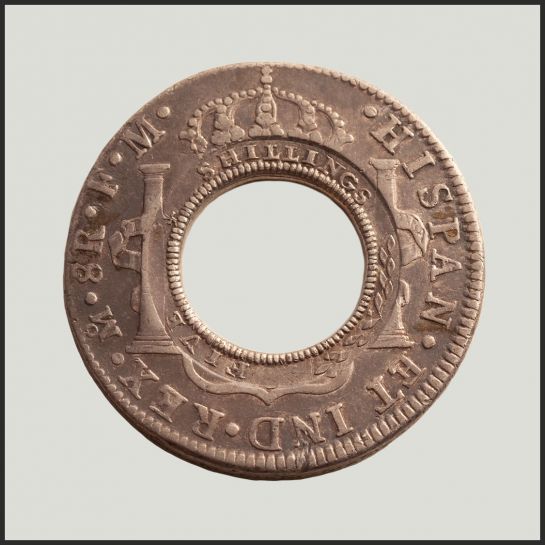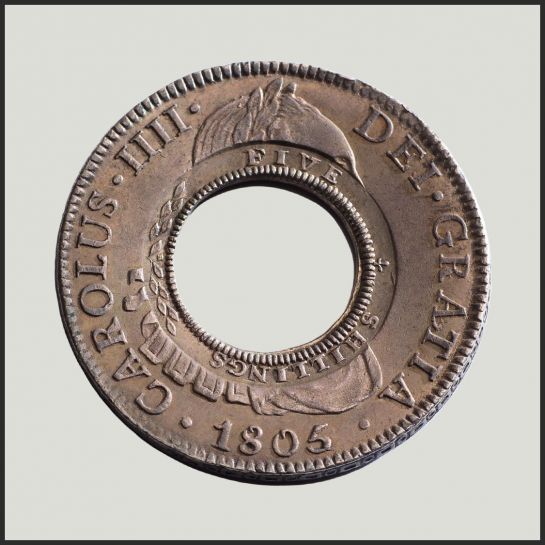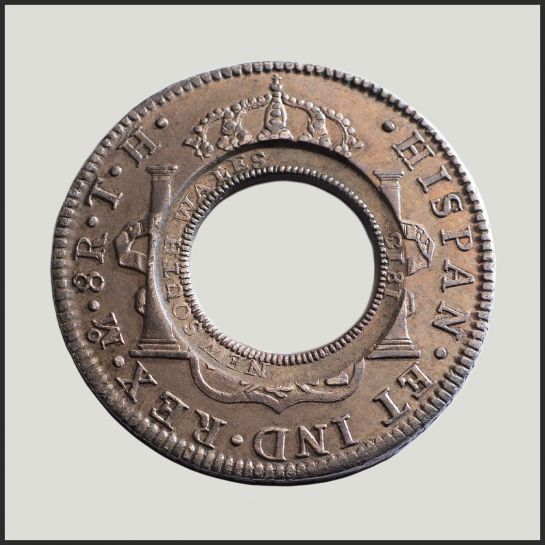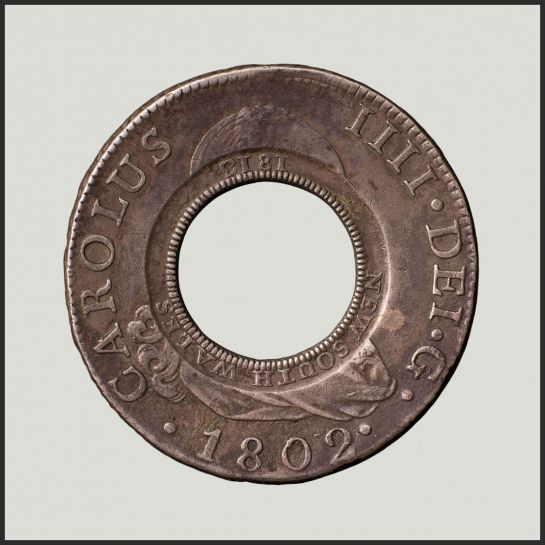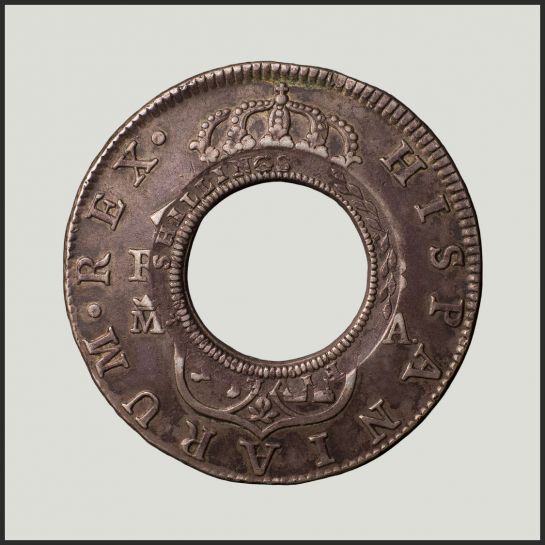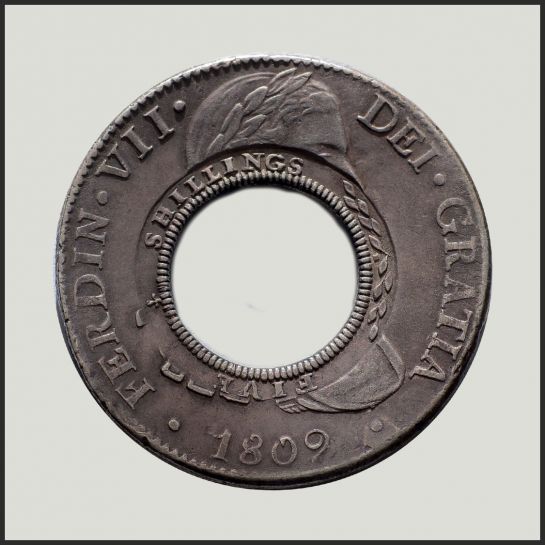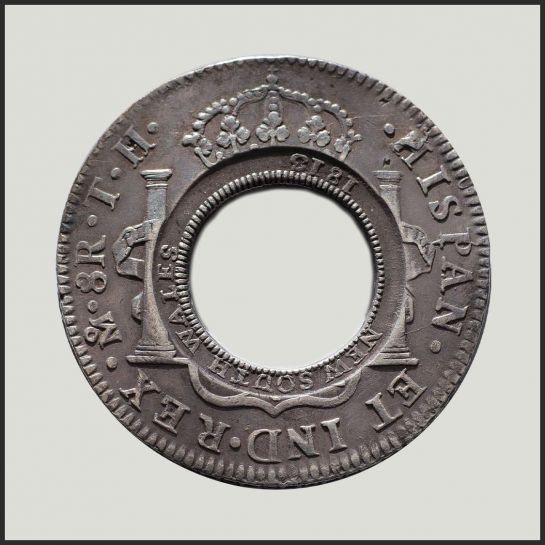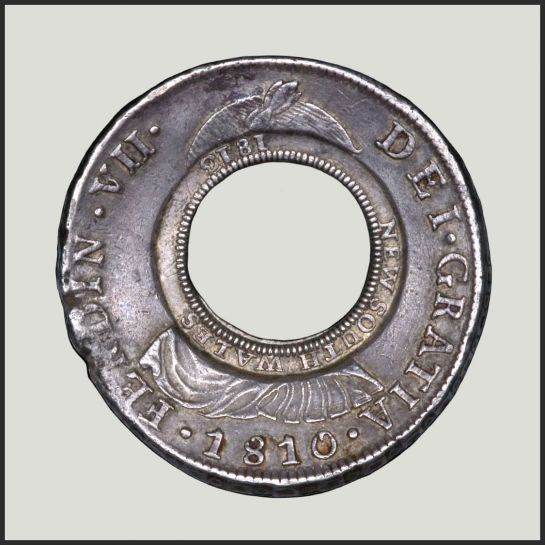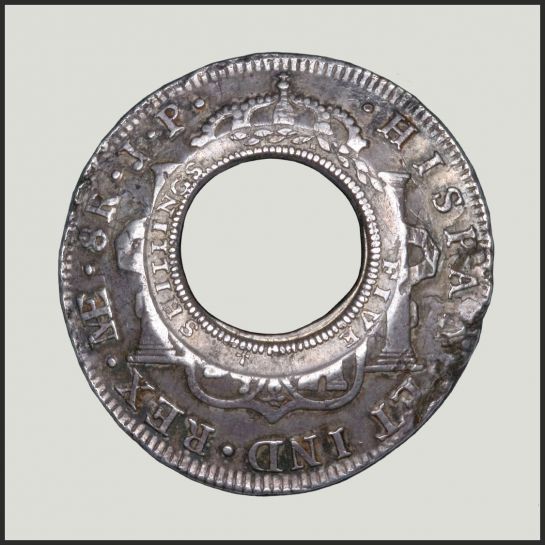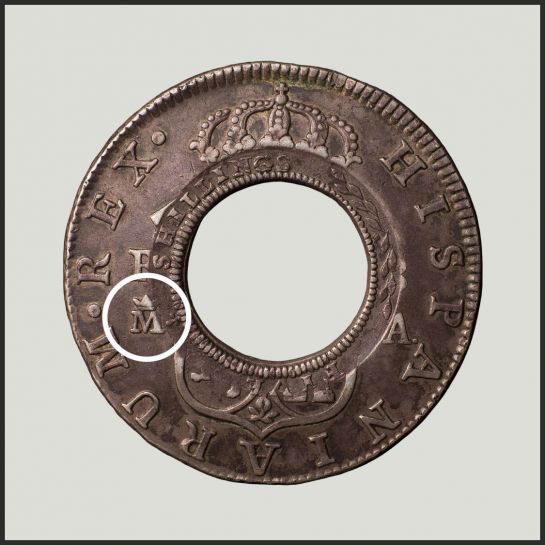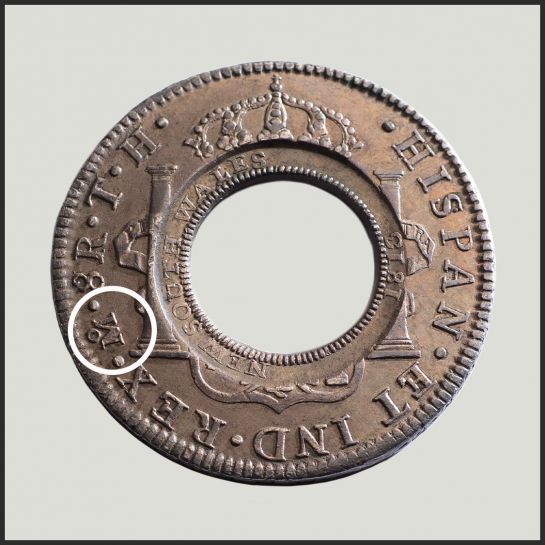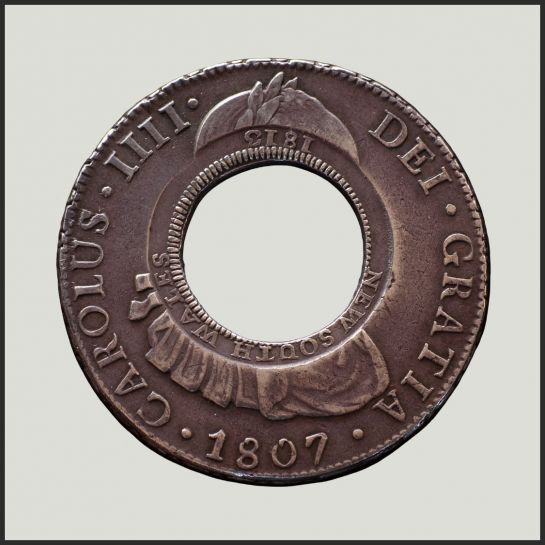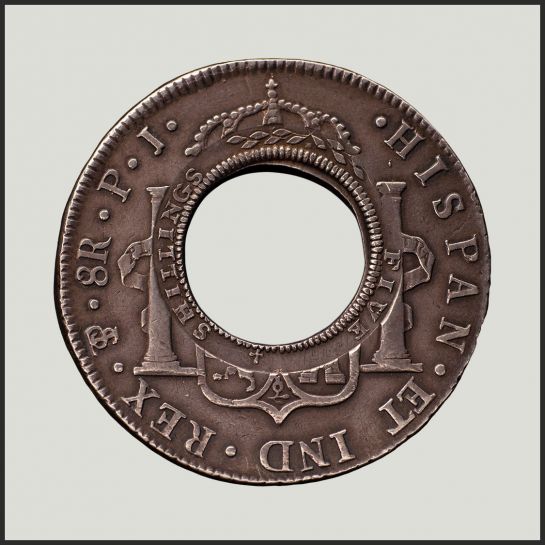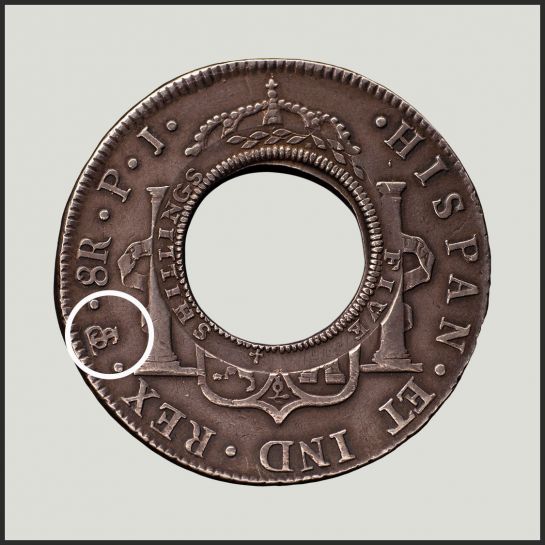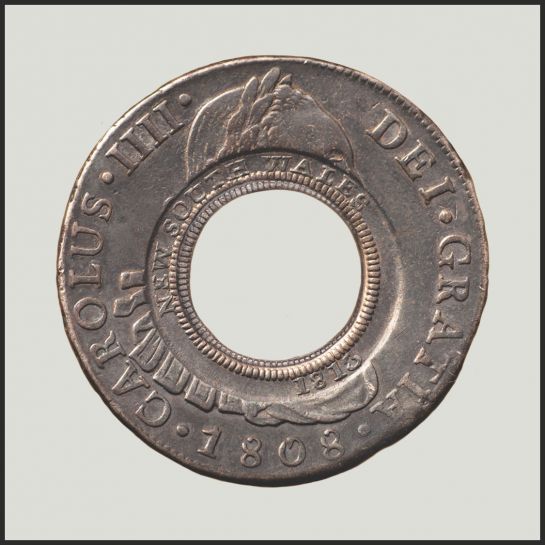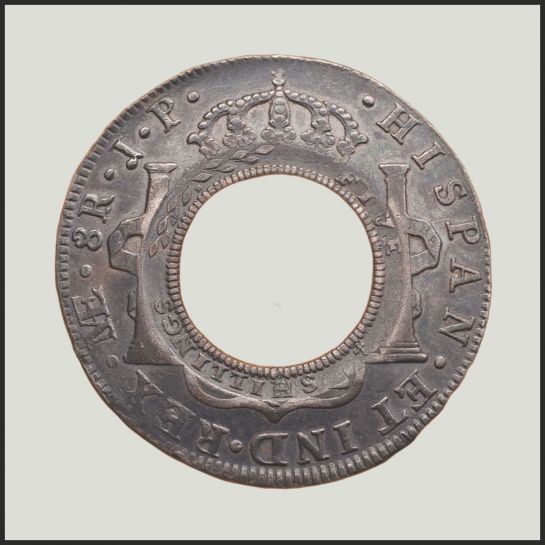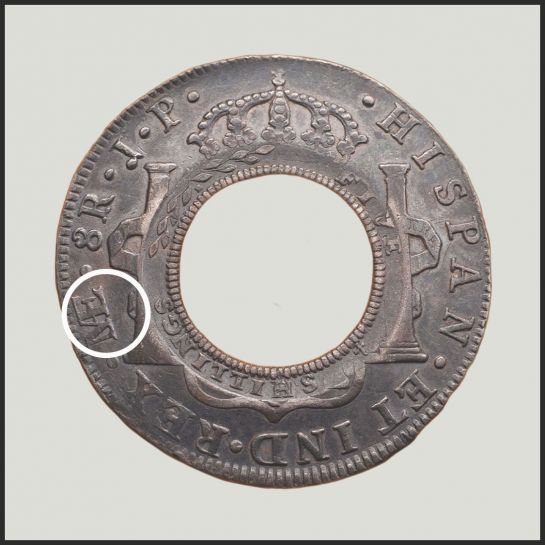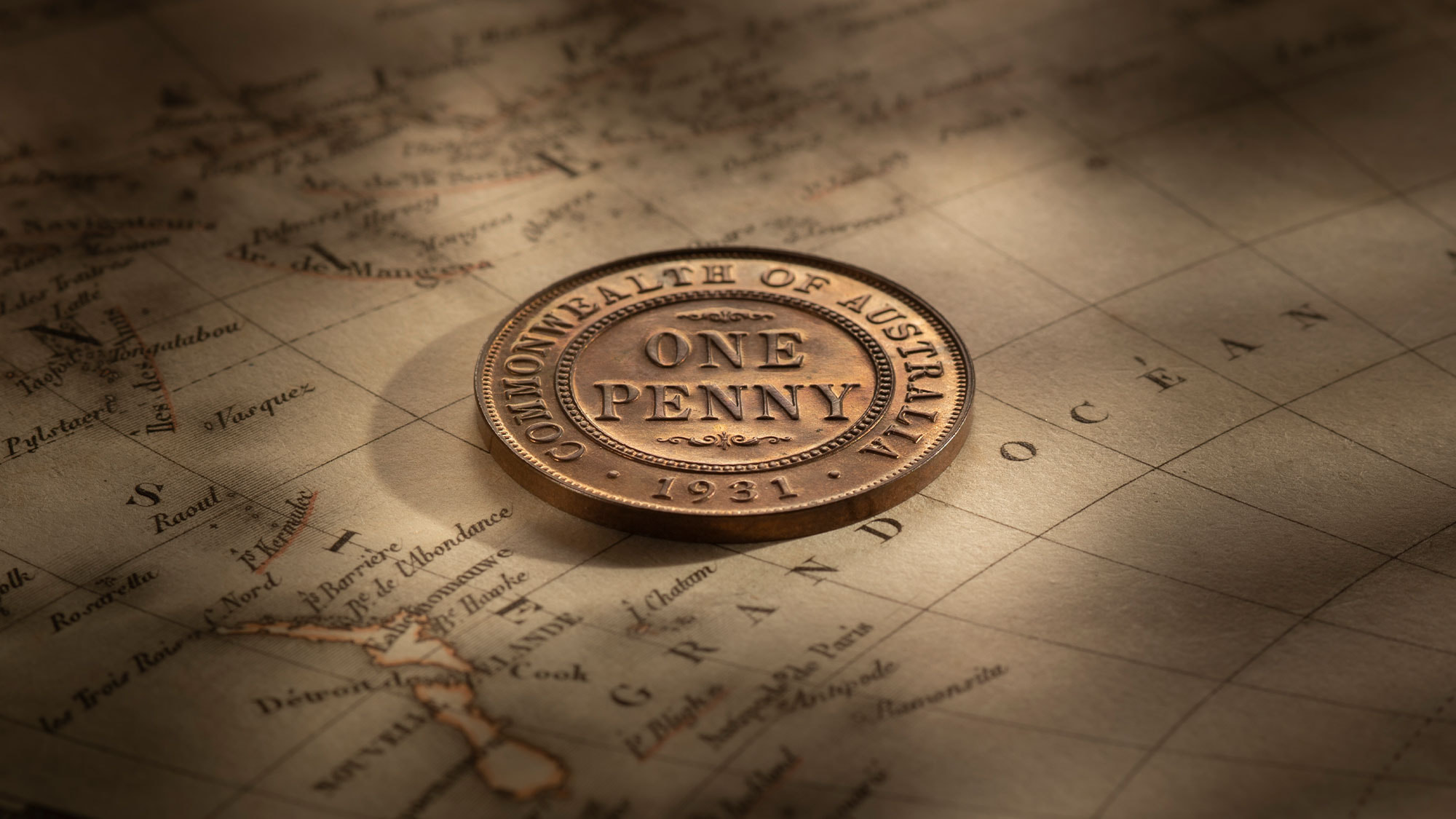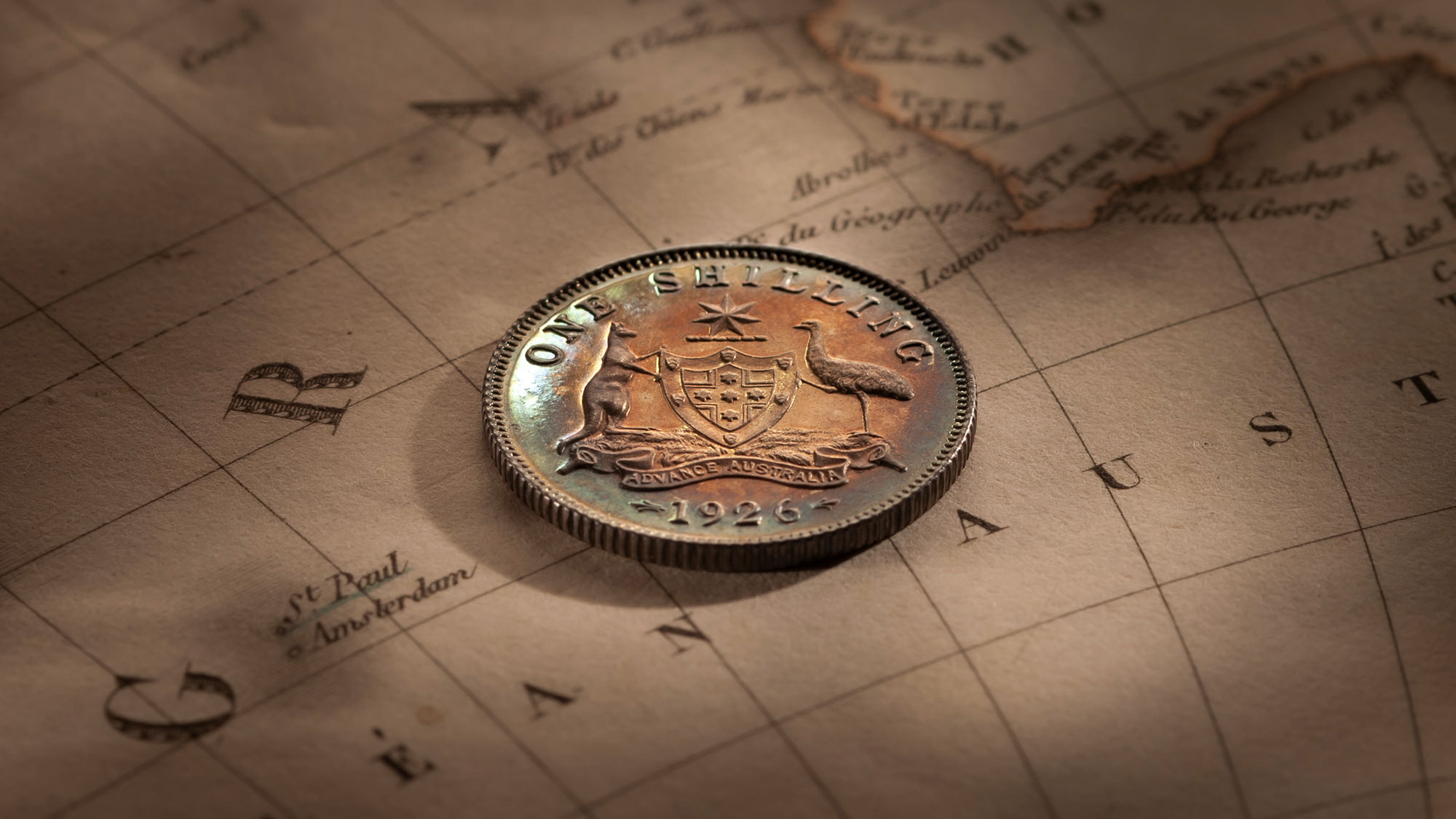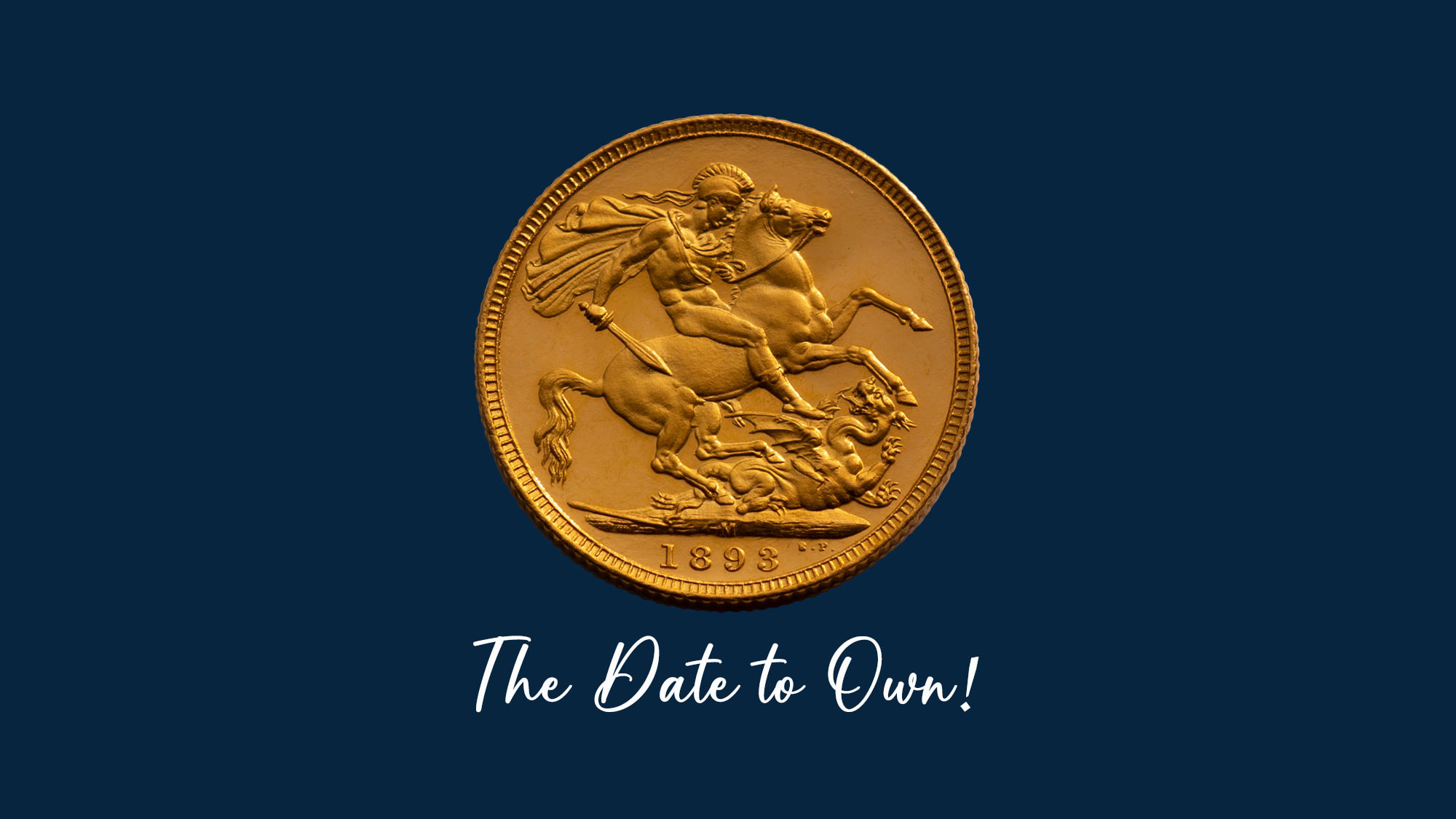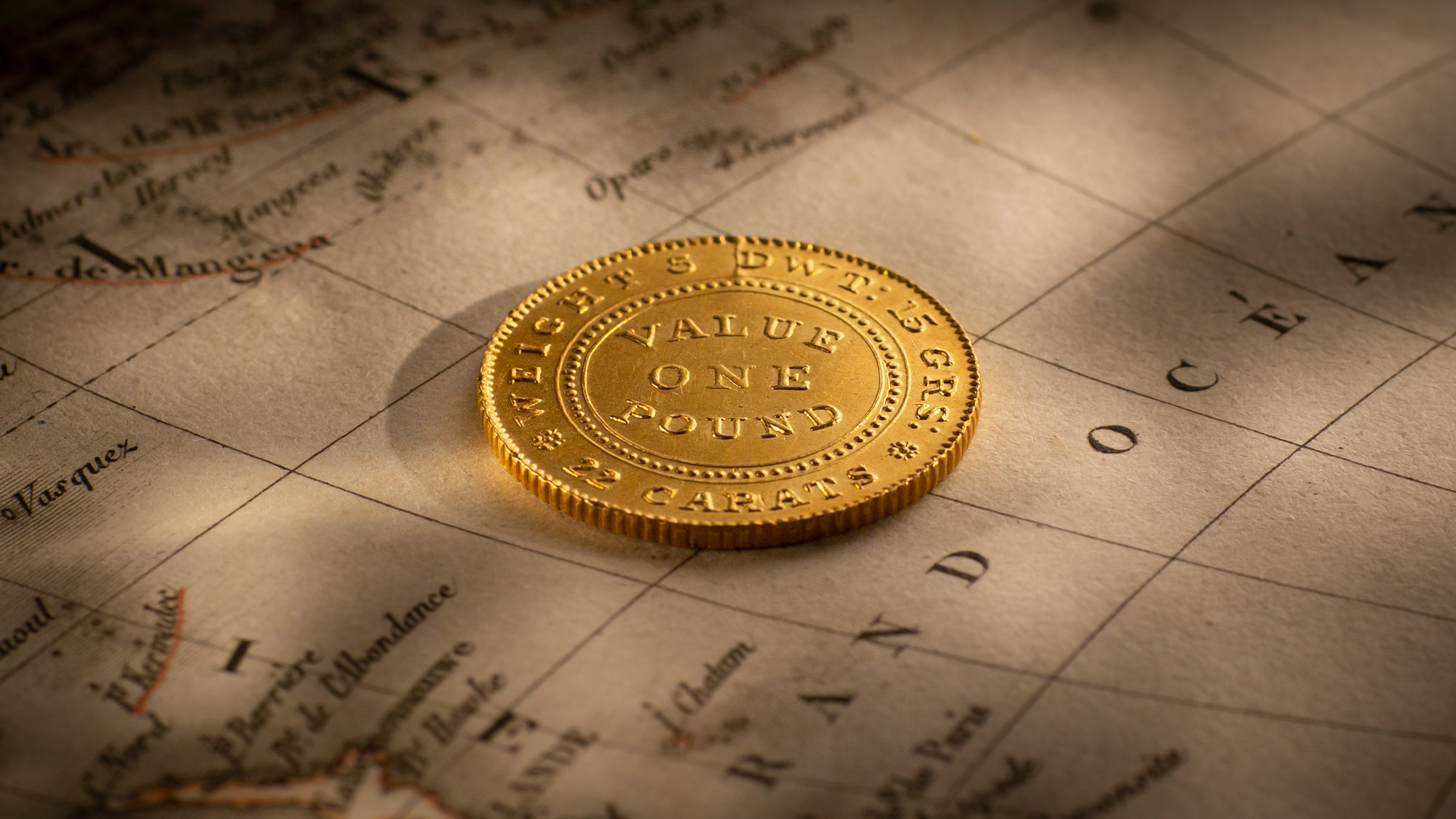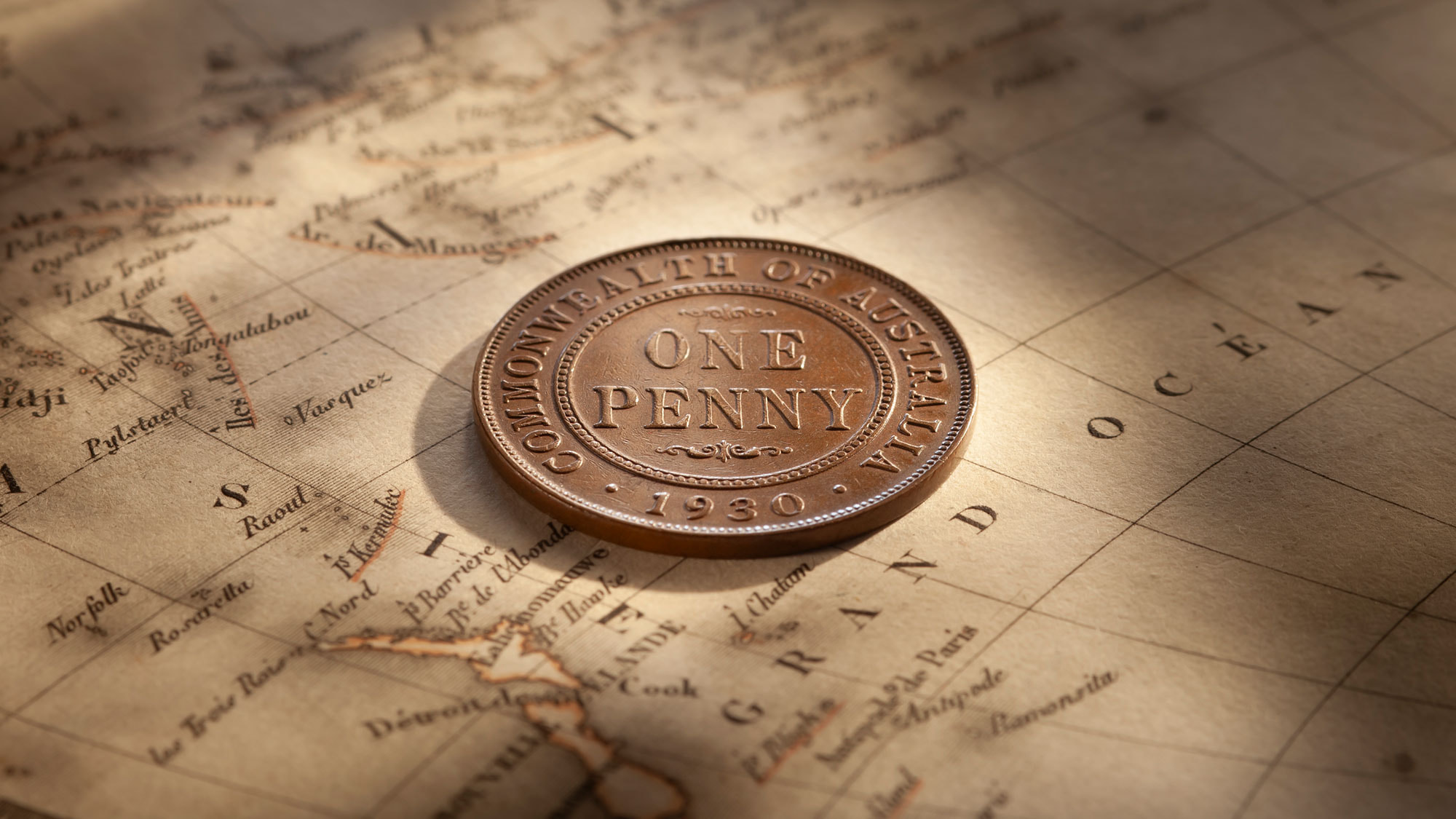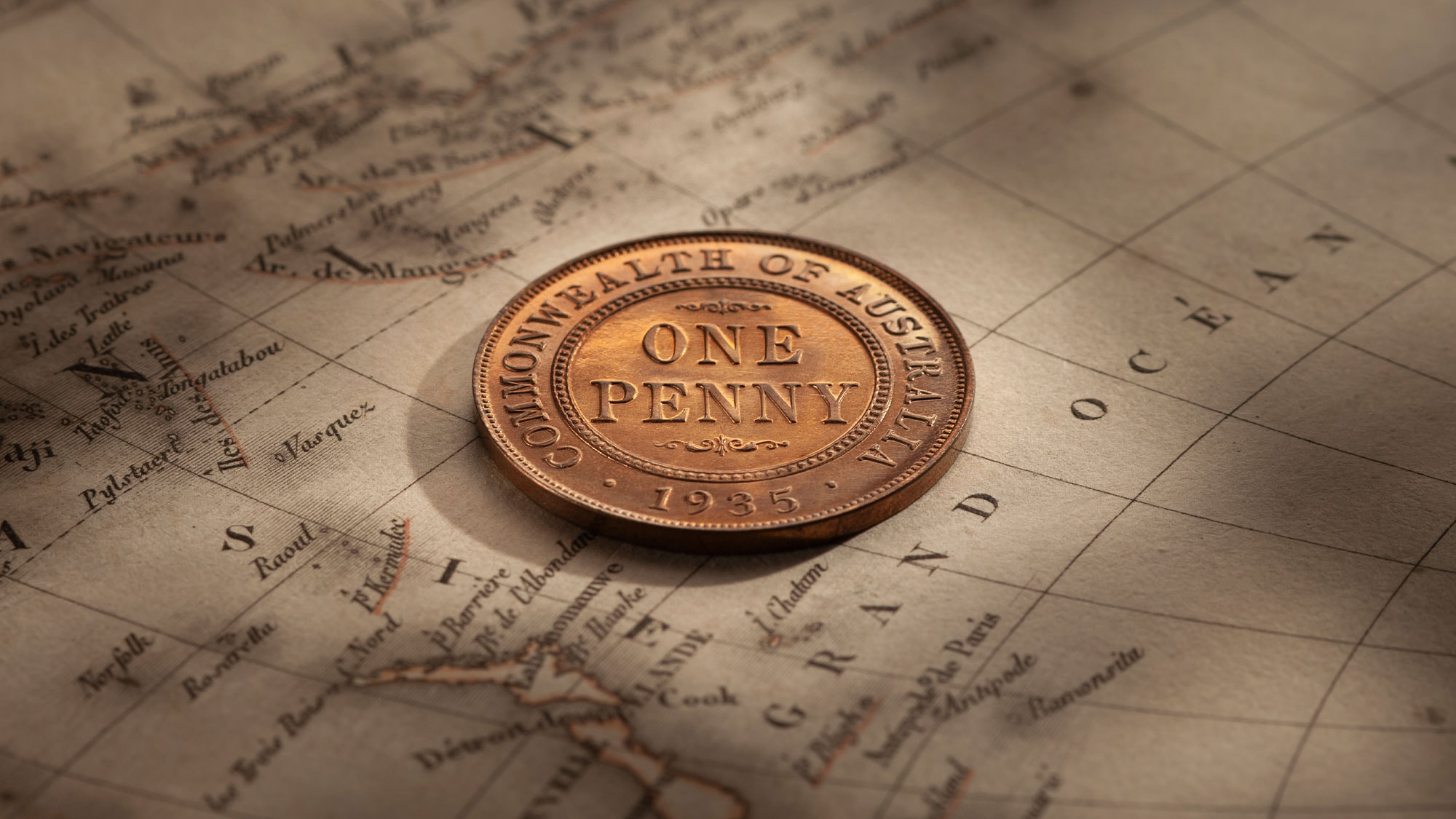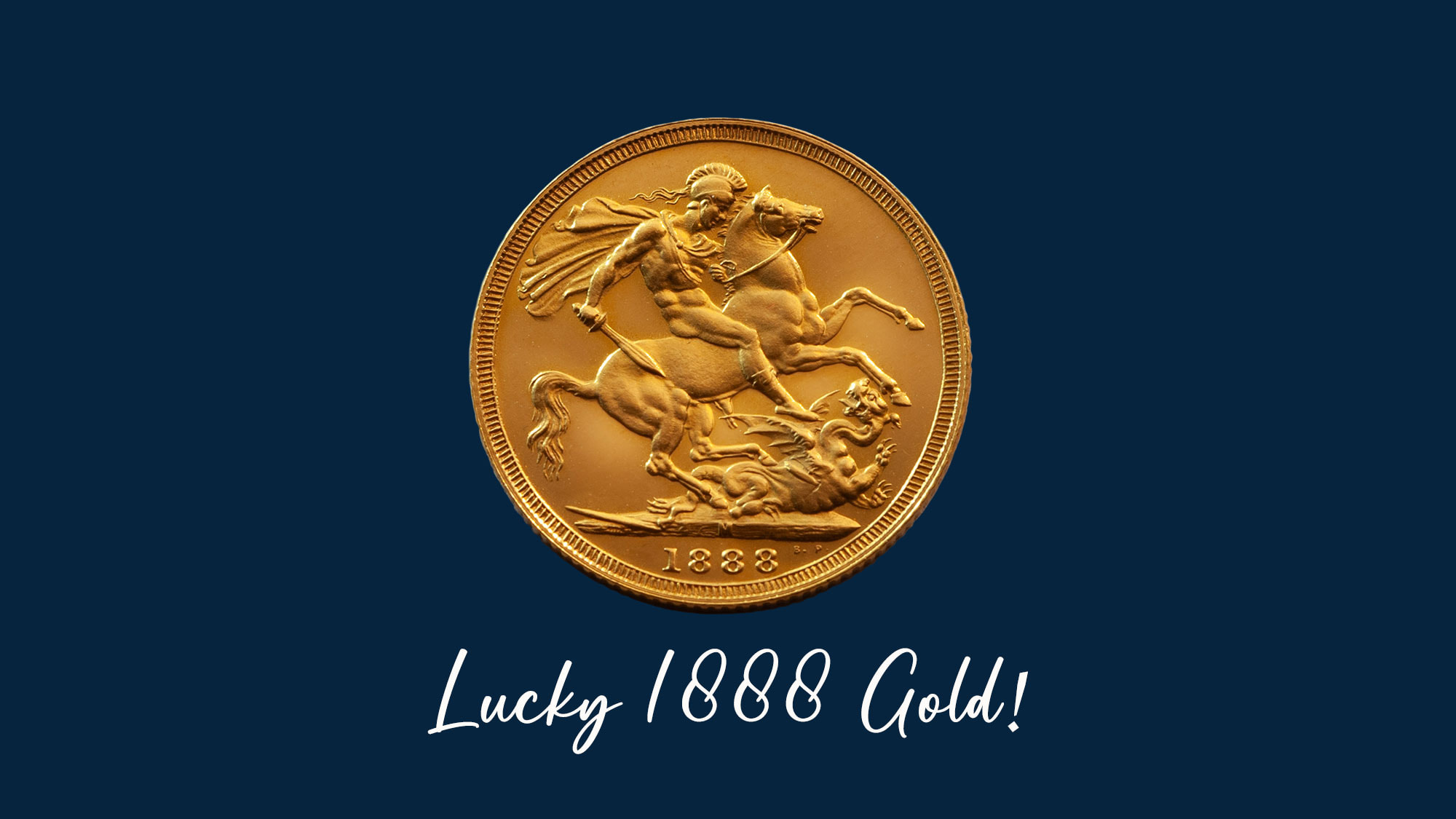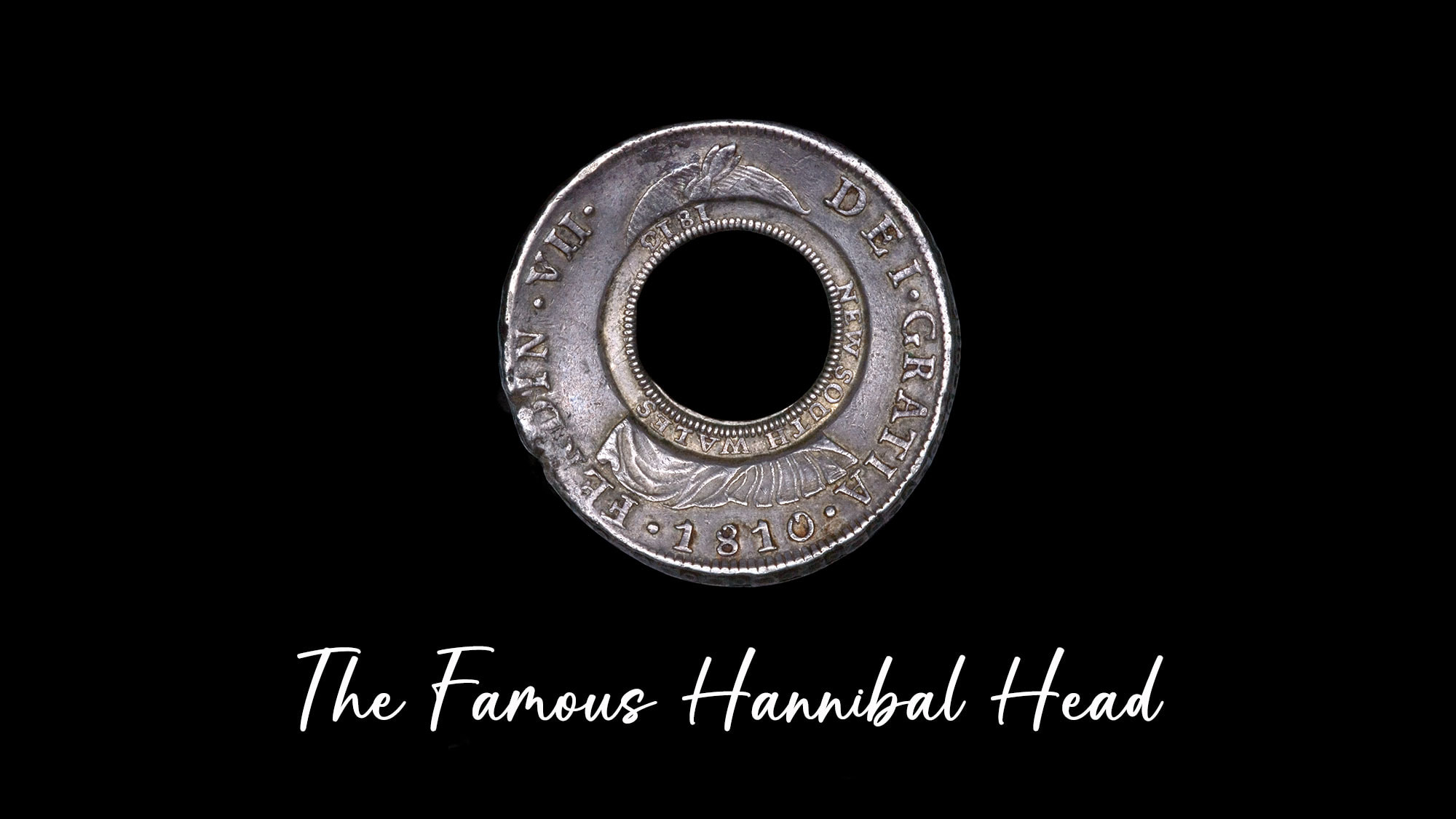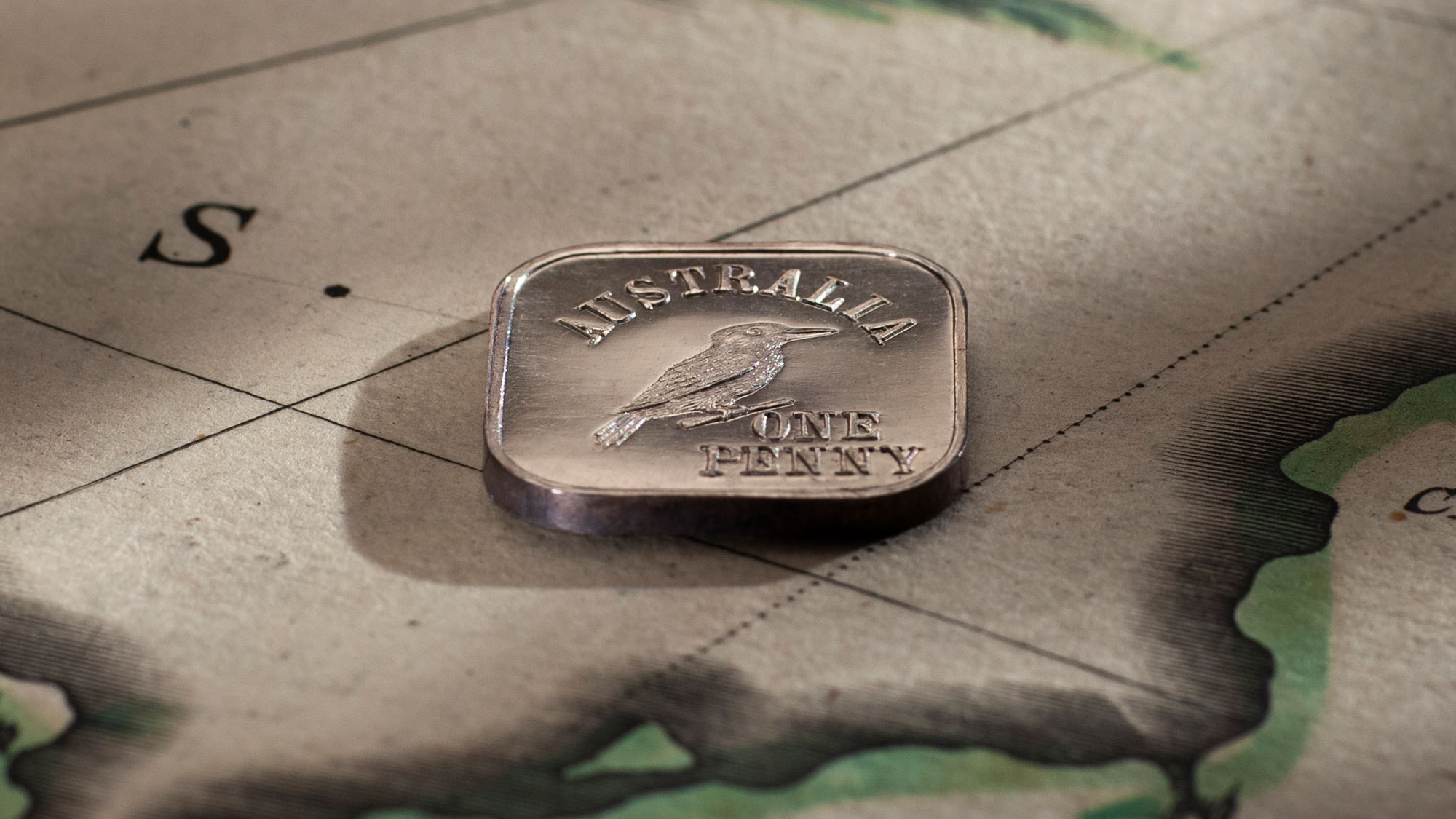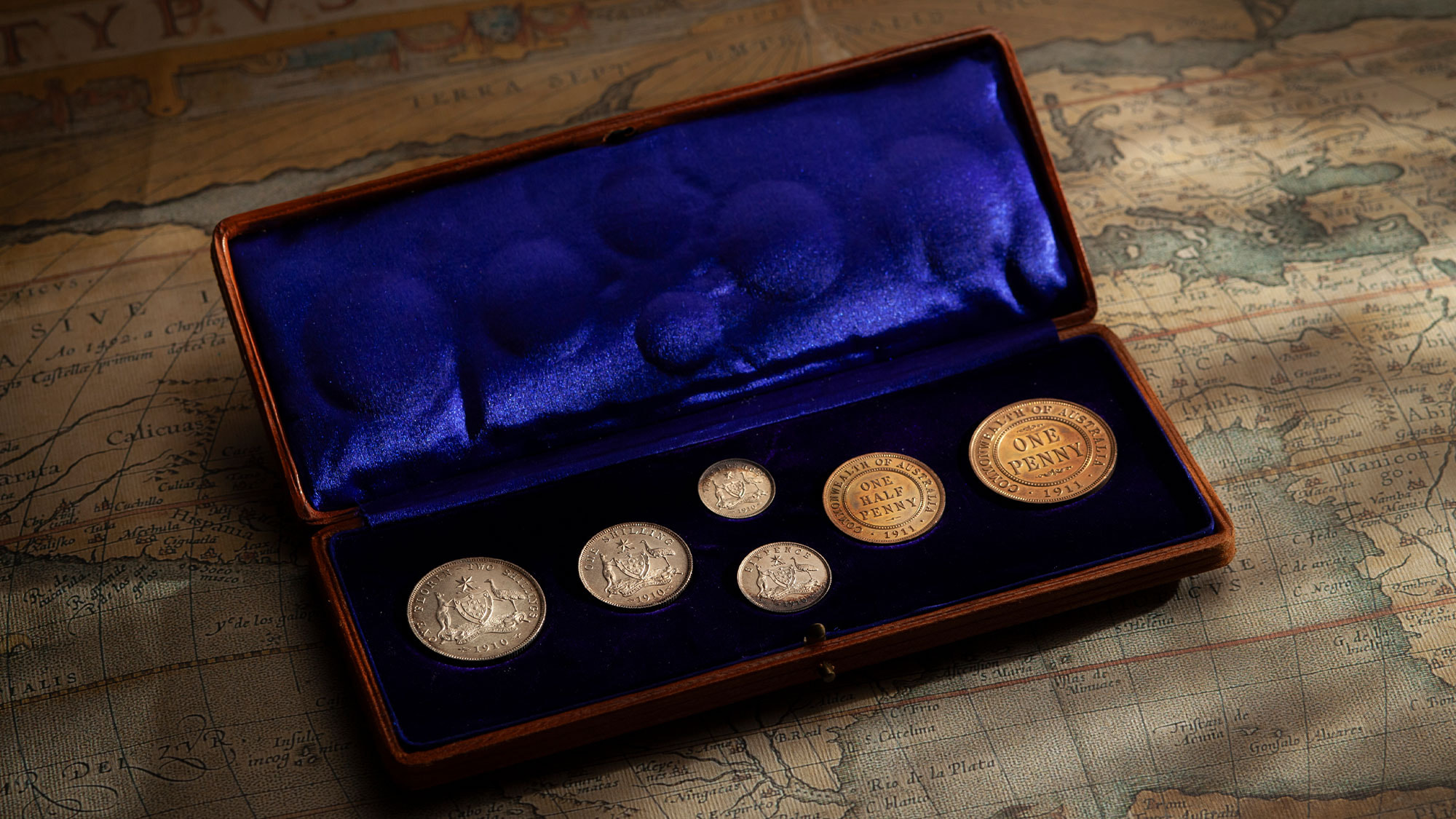The Top Dollars.
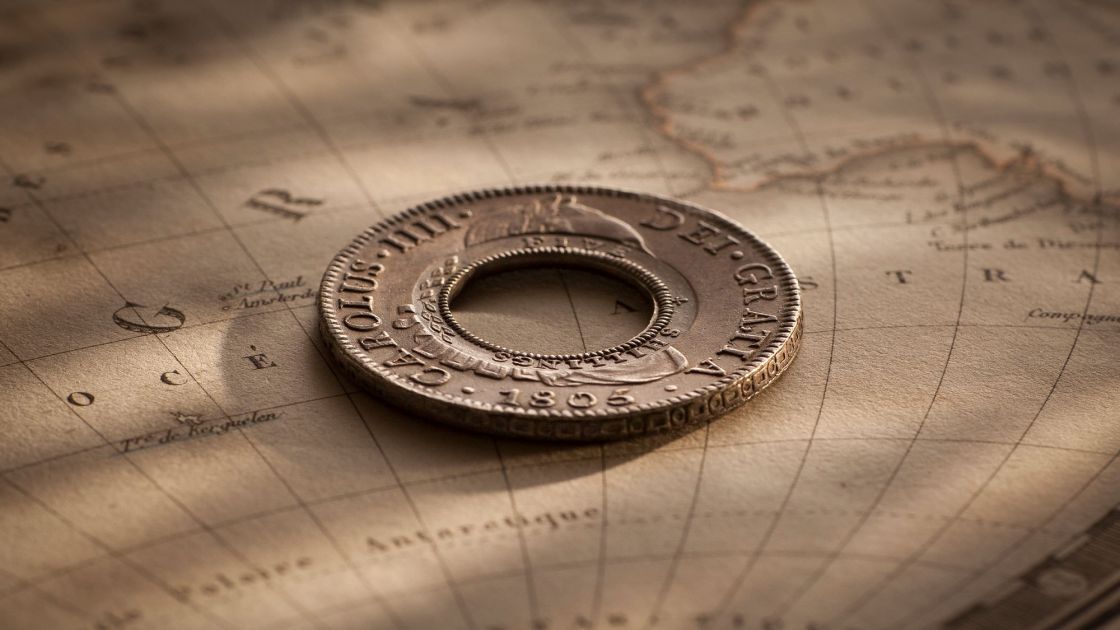
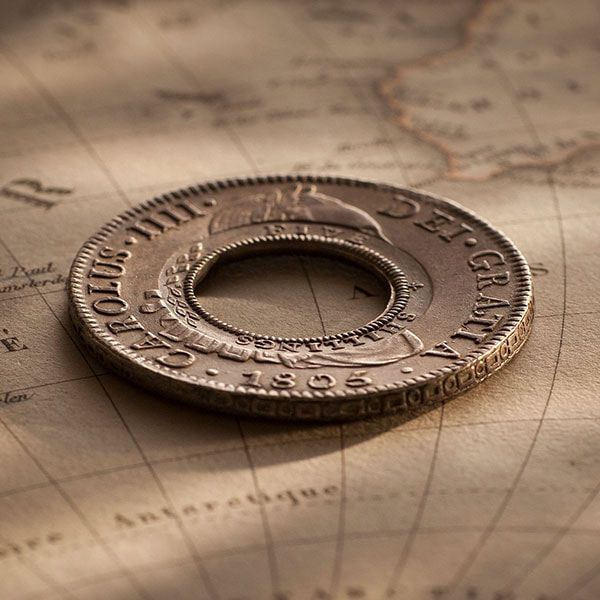
In the realm of rare coins, Holey Dollars exist on a different plane.
They transcend mere collectibles, and have become coveted objects that represent the pinnacle of Australia's numismatic industry, our very first coin.
Owning a Holey Dollar isn't just about adding another coin to a collection. It's about indulging in an experience, a fusion of history and prestige.
You are not just buying a coin, you are owning the experience.
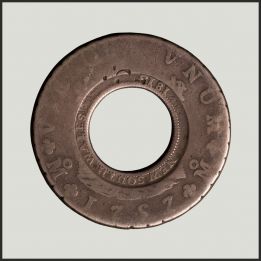
Ferdinand VI
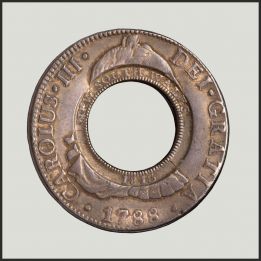
Charles III
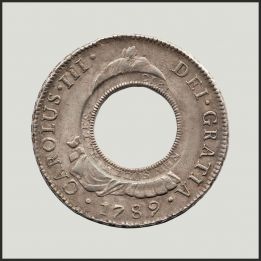
Charles III Deceased
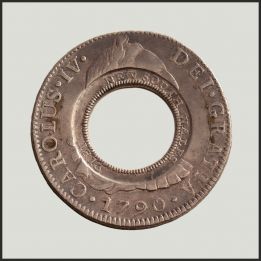
Charles III on Charles IV
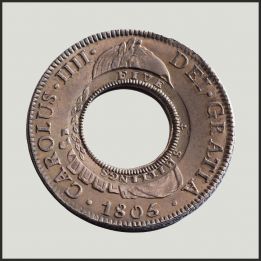
Charles IV
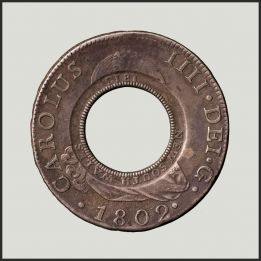
Charles IV Continental
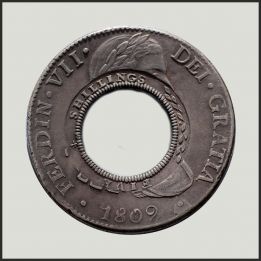
Ferdinand VII
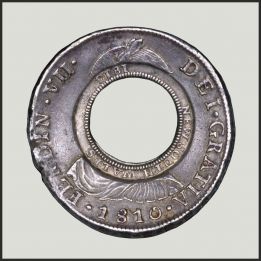
Ferdinand VII Hannibal Head
This article presents the 'Top Dollars'.
They are exceptional coins. Some are unique. All are rare.
Eight Holey Dollars have been selected to represent the Spanish monarchs of Ferdinand VI, Charles III, Charles IV and Ferdinand VII and are shown above. They are the finest available.
Four Holey Dollars have been selected to represent the issuing mints, the Madrid Mint and the Spanish colonial mints of Mexico, Lima and Peru and are shown below. They too are the finest available.
Each coin is a benchmark of its type, a standard of excellence against which others are judged. They are unequivocally, the 'Top Dollars'.

Madrid Mint

Mexico Mint
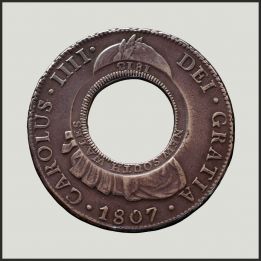
Potosi Mint
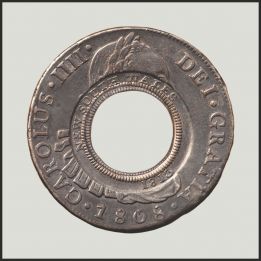
Lima Mint
When you look closely at the Holey Dollars shown above, each coin has a different date and the legend and portraits, vary.
Put them together and they tell a story. Their narrative, is as much about Australian history as it is about European history, charting the changing Spanish monarchs, Ferdinand VI, Charles III, Charles IV and Ferdinand VII. And the associated political and social turmoil that so often occurs when a monarch dies or abdicates.
As to why there are different configurations of Holey Dollars? The simple answer is that the Holey Dollar was not created from a silver blank onto which a decorative pattern was stamped in a mass production process that produced thousands of uniformly struck coins, each featuring the same design.
Forty thousand Spanish Silver Dollars were imported by Governor Lachlan Macquarie to convert to forty thousand Holey Dollars, the nation's first circulating currency.
The quality of each dollar varied. So too their dates which meant that they depicted different Spanish monarchs. And they were struck at different mints. Each coin in the shipment of 40,000 was different.
And it is the variations in quality, date, monarch, design and the issuing mint that offers the Holey Dollar buyer multiple choices and different degrees of rarity.
So with less than two hundred privately held by collectors, all Holey Dollars are rare. Some, however, are far rarer than others.
The Pillar Dollar
Unique. The only known Holey Dollar created from a Spanish Dollar of the 'pillar' type, issued during the reign of Ferdinand VI.
There are no other examples of Holey Dollars created from pillar dollars, in private collections or in institutions worldwide.
Date of the silver dollar: 1757
Reigning monarch: Ferdinand VI (1746 - 1759)
Design of the silver dollar: pillar type
Portrait: no portrait, the reverse features two classically styled pillars
Legend: Ferdinand VI (on the reverse)
Quality of the silver dollar : About Fine
Exhibited: Macquarie Bank 2013, Royal Australian Mint 2019
Value $500,000+
The Montague '1788' Holey Dollar
Created from a Spanish Silver Dollar of the 'bust' type depicting the portrait and legend of Charles III. This coin is the finest of twenty four Charles III Holey Dollars.
The quality of the Spanish Silver Dollar is amazing when you consider that it was minted in 1788 and had twenty five years of circulation before it was converted to a Holey Dollar in 1813. We also note that the counter stamps, applied by William Henshall around the edge of the hole are vertically aligned on both obverse and reverse. This is the optimum position of the counter stamps and was rarely ever achieved.
Date of the silver dollar: 1788
Reigning monarch: Charles III (1759 - 1788)
Design of the silver dollar: colonial bust type
Portrait: Charles III
Legend: Carolus (Charles) III
Quality of the silver dollar : About Extremely Fine
Exhibited: Macquarie Bank 2013, Royal Australian Mint 2019
Value $500,000+
The Charles III (deceased) Holey Dollar
Created from a Spanish Silver Dollar of the 'bust' type depicting the portrait and legend of the deceased King Charles III (Charles III died in December 1788). To maintain coin production, the colonial mints continued to produce coinage with the legend and portrait of the deceased king.
This Holey Dollar was converted from a silver dollar minted in Peru. It is unique. One other example exists, the dollar minted in 1789, in Mexico. Again, we comment on its superior quality for the dollar circulated twenty four years before it was converted into this Holey Dollar in 1813. Amazing!
Date of the silver dollar: 1789
Reigning monarch: Charles IV (1788 - 1808)
Design of the silver dollar: colonial bust type
Portrait: Charles III
Legend: Carolus (Charles) III
Quality of the silver dollar : Extremely Fine
Exhibited: Macquarie Bank 2013, Royal Australian Mint 2019
Value $550,000
The Charles III on Charles IV Holey Dollar
To ensure that the colonial mints could continue their coinage production uninterrupted, a Royal decree granted them the right to amend the legend to Carolus IV to acknowledge the new monarch but continue striking coins with the portrait of the deceased King Charles III.
This coin is the finest of eight privately held examples depicting the portrait of Charles III and the legend Carolus IV.
Date of the silver dollar: 1790
Reigning monarch: Charles IV (1788 - 1808)
Design of the silver dollar: colonial bust type
Portrait: Charles III
Legend: Carolus (Charles) IV
Quality of silver dollar : About Extremely Fine
Exhibited: Macquarie Bank 2013, Royal Australian Mint 2019
Value $400,000
The Unique Charles IV Holey Dollar
This Holey Dollar is without peer. A Holey Dollar created from a Spanish Silver Dollar that shows no signs of circulation. It begs the question ... as the original silver dollar was minted in Mexico in 1805, how did it avoid usage in the seven years before it arrived in the colony of New South Wales? And how did it avoid usage after it was converted into a Holey Dollar in 1813?
Miraculous preservation, unique for quality, and the absolute finest of the three hundred Holey Dollars that are held in private collections and institutions, worldwide.
Date of the silver dollar: 1805
Reigning monarch: Charles IV (1788 - 1808)
Design of the silver dollar: colonial bust type
Portrait: Charles IV
Legend: Carolus (Charles) IIII
Quality of silver dollar : Uncirculated
Value $600,000+
The Madrid (Continental) Holey Dollar
Created from a Spanish Silver Dollar of the 'bust' type that was minted at the Madrid Mint. The Spanish Mints of Madrid and Seville produced silver dollars of a different design to those minted in the colonies and are referred to as Continental dollars. They were a status of Royalty, the Church and wealthy landowners and were as a consequence hoarded. Holey Dollars converted from Continental dollars are by default, exceedingly scarce.
This is the finest of six Continental Holey Dollars (two Seville Mint and four Madrid Mint) and the only one in private hands. Noted in 1988 as 'the most desirable' of all Holey Dollars.
Date of the silver dollar: 1802
Reigning monarch: Charles IV (1788 - 1808)
Design of the silver dollar: continental bust type
Portrait: Charles IV
Legend: Carolus (Charles) IIII
Quality of the silver dollar : Good Extremely Fine
Exhibited: Macquarie Bank 2013, Royal Australian Mint 2019
Value $650,000+
The Ferdinand VII Holey Dollar
Created from a Spanish Silver Dollar of the 'bust' type depicting the portrait and legend of Ferdinand VII. In 1808, Charles IV abdicated the throne for his son Ferdinand VII. In that same year, Napoleon Bonaparte persuaded Ferdinand to relinquish his monarchical authority and placed his brother Joseph Bonaparte on the Spanish throne. The colonial Mexico Mint refused to accept Bonaparte as king and continued to use the portrait and legend of Ferdinand VII.
This coin is the finest of thirteen Holey Dollars featuring the legend and portrait of Ferdinand VII.
Date of the silver dollar: 1809
Reigning monarch: Joseph Bonaparte (1808 - 1813)
Design of the silver dollar: colonial bust type
Reigning monarch: Joseph Bonaparte (1808 - 1813)
Portrait: Ferdinand VII
Legend: Ferdinand VII
Quality of silver dollar : Extremely Fine
Value $500,000
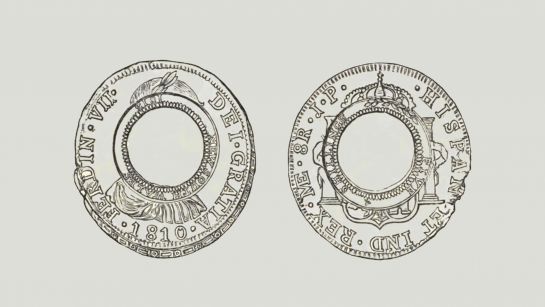
• Pencil illustration Numismatic Chronicle London 1883 •
The Hannibal Head Holey Dollar
Created from a Spanish Silver Dollar of the 'bust' type depicting the legend of Ferdinand VII and an imaginary portrait referred to as the 'Hannibal Head'. In 1808, Charles IV abdicated the throne for his son Ferdinand VII. In that same year, Napoleon Bonaparte persuaded Ferdinand to to relinquish his monarchical authority and placed his brother Joseph Bonaparte on the Spanish throne. The colonial mint in Lima Peru refused to accept Bonaparte and maintained the legend Ferdinand VII and used a portrait, said to be most unflattering, referred to as the 'Hannibal Head'.
This coin is the finest of two Hannibal Head Holey Dollars. A pencil drawing of this coin, published in 1883 in London's Numismatic Chronicle, is the earliest known illustration of Australia’s very first coin (shown here).
Date of the silver dollar: 1810
Reigning monarch: Joseph Bonaparte (1808 - 1813)
Design of the silver dollar: colonial bust type
Portrait: imaginary, known as the Hannibal Head
Legend: Ferdinand VII
Quality of silver dollar: About Extremely Fine
Exhibited: Macquarie Bank 2013, Royal Australian Mint 2019
Value $550,000+
Holey Dollars representing the Madrid Mint and colonial mints of Mexico, Lima and Peru and each the finest of their type (the mint mark circled).
Macquarie’s shipment of Spanish Silver Dollars was ordered from the East India Company and came from Madras.
It was comprised of coins struck in Spain with the overwhelming majority coming from the Spanish colonies of Mexico, Peru, Bolivia and Guatemala.
Holey Dollars created from silver dollars sourced from the Mexico Mint are the most readily available, followed by the Lima Mint in Peru, Potosi Mint in Bolivia, with the Madrid Mint unique in private hands. Only one Holey Dollar has ties to the Guatemala Mint, and it is held in Chateau Ramezay, a museum in Montreal, Canada.
Madrid Mint Holey Dollar, unique in private hands
This is the finest of six Continental Holey Dollars (two Seville Mint and four Madrid Mint) and the only example held in private hands. Noted in 1988 as 'the most desirable' of all Holey Dollars.
The Spanish Mints of Madrid and Seville produced silver dollars of a different design to those minted in the colonies and are referred to as Continental dollars. They were a status of Royalty, the Church and wealthy landowners and were as a consequence hoarded. Holey Dollars converted from Continental dollars are by default, exceedingly scarce.
Date of the silver dollar: 1802
Reigning monarch: Charles IV (1788 - 1808)
Design of the silver dollar: continental bust type
Portrait: Charles IV
Legend: Carolus (Charles) IIII
Mint mark: 'M' underneath a crown on the reverse
Quality of the silver dollar : Good Extremely Fine
Exhibited: Macquarie Bank 2013, Royal Australian Mint 2019
Value $650,000+
The finest Mexico Mint Holey Dollar
Miraculous preservation, unique for quality, and the finest Mexico Mint Holey Dollar. And the absolute finest of the three hundred Holey Dollars that are held in private collections and institutions, worldwide.
This Holey Dollar is without peer. A Holey Dollar created from a Spanish Silver Dollar that shows no signs of circulation. It begs the question ... as the original silver dollar was minted in Mexico in 1805, how did it avoid usage in the seven years before it arrived in the colony of New South Wales? And how did it avoid usage after it was converted into a Holey Dollar?
Date of the silver dollar: 1805
Reigning monarch: Charles IV (1788 - 1808)
Design of the silver dollar: colonial bust type
Portrait: Charles IV
Legend: Carolus (Charles) IIII
Mint mark: 'M' with a small circle above it in the legend on the reverse
Quality of silver dollar : Uncirculated
Value $600,000+
The finest Potosi Mint Holey Dollar
Created from a Spanish Silver Dollar of the 'bust' type depicting the portrait and legend of Charles IV, this coin is the finest of sixteen Holey Dollars with ties to the Potosi Mint in Bolivia.
Great force had to be exerted on the Spanish Silver Dollar to punch out the central hole. As a consequence, many Holey Dollars are found slightly dished and distorted. With this Holey Dollar, the silver dollar flan is flat and has not been distorted by the cutting process. And the coin does not exhibit any metal fatigue. This is simply a fabulous Holey Dollar, the even shape allowing the design details to be displayed to the max.
Date of the silver dollar: 1807
Reigning monarch: Charles IV (1788 - 1808)
Design of the silver dollar: colonial bust type
Portrait: Charles IV
Legend: Carolus (Charles) IV
Mint mark: PTS monogram in the legend on the reverse said to be the inspiration of the '$' sign
Quality of the silver dollar : Extremely Fine
Value $450,000+
The finest Lima Mint Holey Dollar
Created from a Spanish Silver Dollar of the 'bust' type depicting the portrait and legend of Charles IV, this coin is the finest of twenty two Holey Dollars with ties to the Lima Mint in Peru.
At Good Extremely Fine, this coin is in the top four the three hundred Holey Dollars that are held in private collections and institutions, worldwide. We also note the counter stamps on the obverse, applied by William Henshall around the edge of the hole, are in the same vista as the date 1808. This is the optimum position of the counter stamps and was rarely ever achieved by mint master, William Henshall.
Date of the silver dollar: 1808
Reigning monarch: Charles IV (1788 - 1808)
Design of the silver dollar: colonial bust type
Portrait: Charles IV
Legend: Carolus (Charles) IV
Mint mark: LMAE monogram in the legend on the reverse
Quality of the silver dollar : Good Extremely Fine
Value $500,000+
Highlights of Coinworks Inventory
© Copyright: Coinworks
